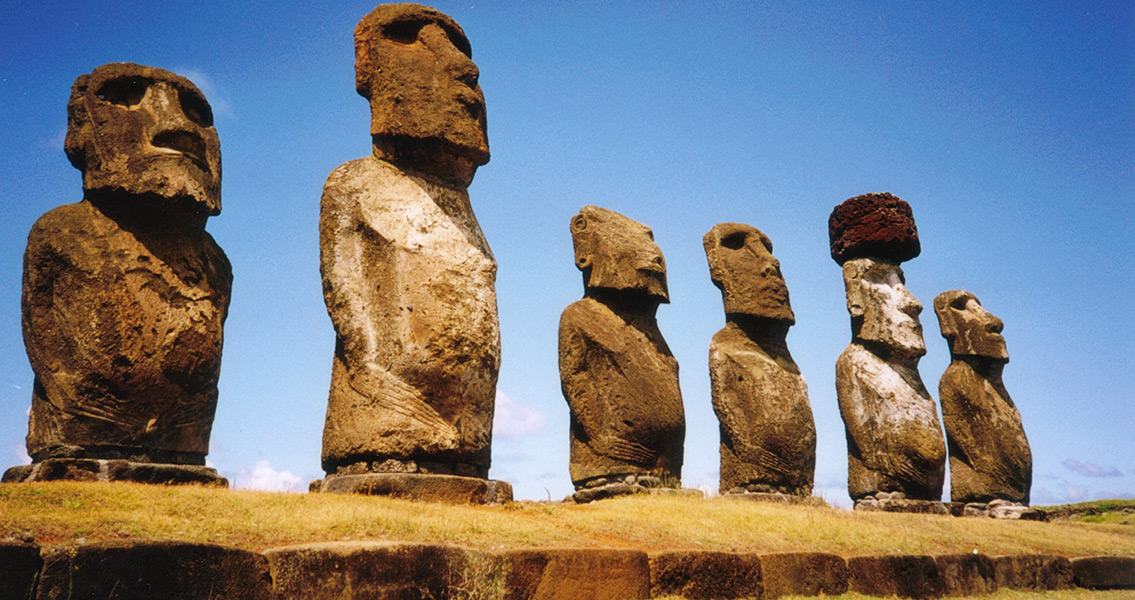<![CDATA[The moai statues on Easter Island are perhaps some of the best known man-made monuments in the world. Yet a mystery has been plaguing the minds of archaeologists: how did the pukao, the hats some of the figures wear, get on their heads? Now, a team of scientists may they have solved that mystery. According to archaeology undergraduate Sean Hixon from the University of Oregon, a co-author of the study, the pukao were rolled up to the moai’s heads via a pulley system. The study authors are basing this conclusion on the evidence of ring-like indentations on the bottom of the hats as well as vertical scratches along their sides, which would have facilitated the rolling, Hixon explains, as quoted by Ancient Origins. In addition, the shape of the hats themselves: circular rather then oblong, would have been better suited for rolling up without the danger of slipping in the opposite direction. A pulley system is a realistic theory especially because it would not have needed too great a number of people to use - just ten people could easily have operated it. Extrapolating from this, one could suggest that the statues themselves, each around 4 metres high, made from compressed volcanic ash, and weighing as much as 14 tonnes, were put upright using ramps. So far the dominant theory has been that the statues were transported and then erected using the trunks of felled trees as primitive wheels. Another theory, however, claims that the moai were literally walked to their locations, upright, using ropes. This theory was illustrated with an experiment involving a five-tonne replica, but it failed to gain widespread support, mostly because of the rough terrain on the island which critics argue would have made it too difficult to move the statues. The moai statues were created by a Polynesian civilisation that flourished on Easter Island, or Rapa Nui, between the tenth and sixteenth centuries CE. At its height, the population of the island numbered around 15,000, but in the sixteenth century, after Europeans had discovered the island, it quickly declined and perished. Initially, the reasons for this decline were thought to have been associated with environmental destruction that caused a social and economic downturn. Now, however, some researchers are starting to suspect that Europeans’ arrival on Rapa Nui was responsible for the demise of the local civilisation. The statues, 887 in total, are believed by some to have served a religious purpose, perhaps as channels for communication between people and their gods. Some local experts, however, say the moai were made by order of local tribal chieftains as talismans for their communities. That is why, one local guide explains, they don’t face out to the sea but inland. The talisman’s strength was “activated” when the final touch, a pair of coral eyes, were put on the statues. Now the statues are eyeless, possibly due to inter-tribal feuding that aimed to cut these sources of protective energy from the communities they “fed”. Image courtesy of Wikimedia Commons user: Makemake]]>
Easter Island Moai Hats Were Rolled Up
